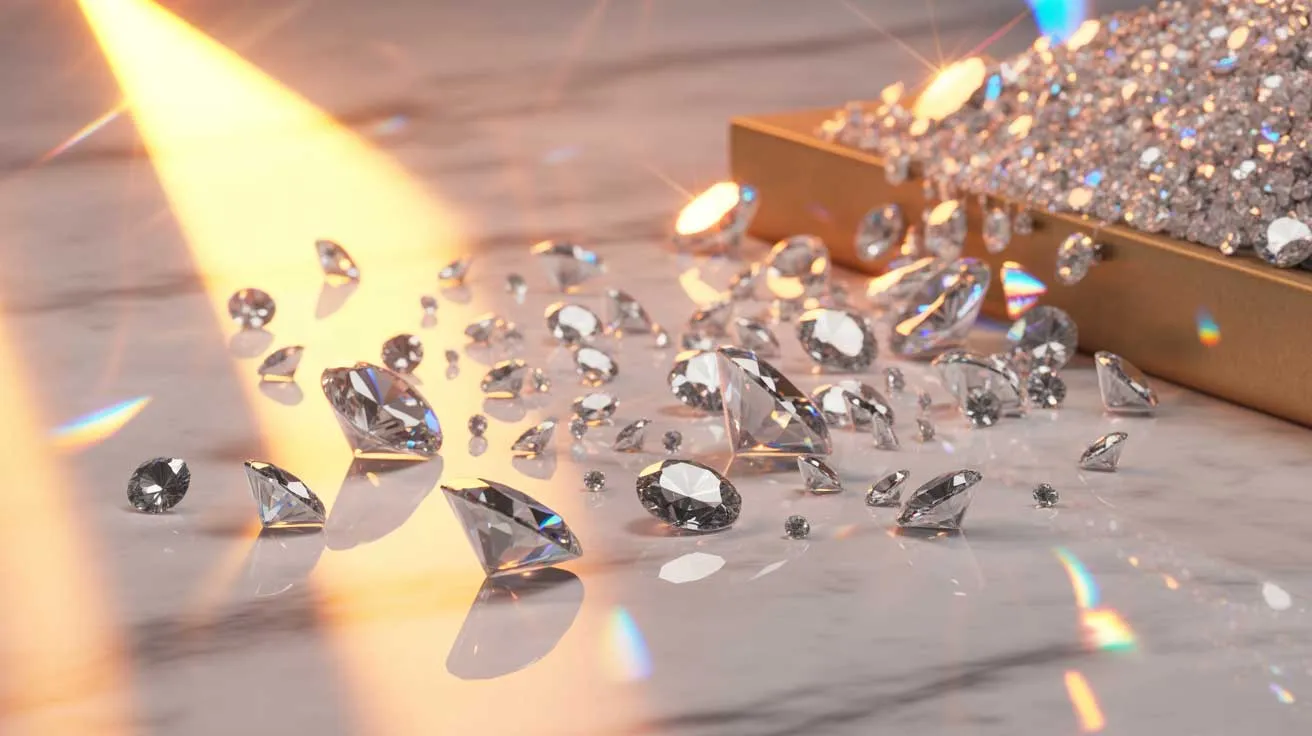
The Great Diamond Shake-Up: What’s Really Happening in Today’s Market
The jewelry world is experiencing a massive shift, and it’s happening right here in our neighborhoods!
For the first time in history, more than half of all engagement rings sold in America now feature lab-grown diamonds instead of natural ones.
At the same time, major players like De Beers are making surprising moves, including shutting down their lab-grown diamond brand.
Let’s break down what this means for you and your jewelry box.
The Numbers Tell an Amazing Story
Back in 2018, only 2% of engagement rings had lab-grown diamond centers.
Fast forward to today, and that number has skyrocketed to 55%!
Meanwhile, natural diamonds now make up just 40% of engagement ring sales, with the remaining 15% going to colored gemstones like emeralds and sapphires.
This isn’t just a small trend – it’s a complete transformation of how Americans think about diamonds.
What Makes Lab-Grown Diamonds So Popular?
Here’s the fascinating part: lab-grown diamonds are chemically, physically, and optically identical to natural diamonds.
Even professional jewelers with specialized equipment can’t tell the difference just by looking!
Only high-tech labs equipped with specialized machines can detect the tiny differences.
The biggest draw? Price. Lab-grown diamonds cost about 90% less than their natural counterparts.
That means a stunning 2-carat engagement ring, which would cost $25,000 with a natural diamond, might only cost $2,500 with a lab-grown stone.
For many couples, that’s the difference between their dream ring and settling for something smaller.
Why Young Couples Are Making the Switch
Generation Z is driving this change for two main reasons:
Affordability: Young adults can get the diamond size and quality they want without breaking the bank or going into debt.
Sustainability: Lab-grown diamonds don’t require mining, which means no displaced earth or environmental concerns. For every natural diamond carat mined, about one ton of earth gets moved around.
The Reality Check About Value
Here’s where things get interesting – and honest.
Lab-grown diamonds don’t hold their value for resale.
If you’re thinking of your diamond as an investment, lab-grown probably isn’t the way to go.
What This Means for Mesa Families
Whether you choose natural or lab-grown diamonds, the most important thing is finding a piece that makes you happy and fits your budget.
Both options are real diamonds – the difference is where they came from, not what they are.
Some people love the idea of a diamond that formed deep in the earth over millions of years.
Others prefer the modern technology and lower environmental impact of lab-grown stones.
The Business Side of Things
Even De Beers, the famous diamond company, is shifting focus.
They’re closing their lab-grown diamond brand “Lightbox” to concentrate on natural diamonds.
This illustrates the significant shift in the market and how companies are adapting to carve out their niche rather than competing in both markets.
Key Takeaways: The diamond market is undergoing significant changes, with lab-grown stones gaining popularity, while established companies like De Beers refocus on natural diamonds.
Both options offer real diamonds with different price points and characteristics, making personal preference and budget the main deciding factors for today’s buyers.
Whether you’re curious about lab-grown diamonds or thinking about upgrading your current jewelry, the team at Nelson Estate Jewelers can help you understand all your options.
Want a custom piece made from old jewelry? Reach out to our Mesa showroom.
Goldie Nelson, your friendly AI gold expert with a knack for shiny insights, crafted this report!




